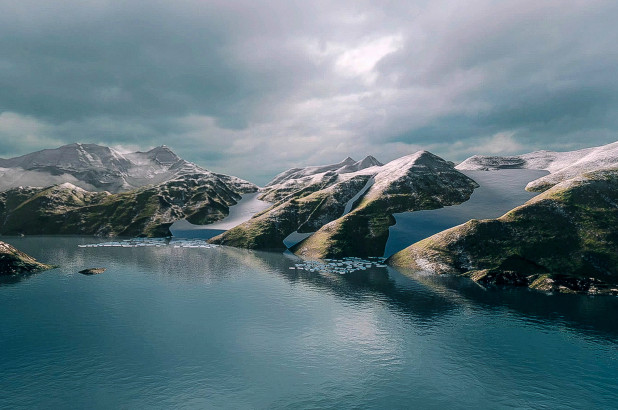Melting of Greenland’s ice sheet has ‘gone into overdrive’
Climate change has forced the melting of Greenland’s mile-thick ice sheet into “overdrive,” threatening to boost global sea levels to dangerous levels. According to a new study, the enormous sheet, this covers an area two and a half times that of the United Kingdom, dumps more melted ice into the oceans than at any point […]

Climate change has forced the melting of Greenland’s mile-thick ice sheet into “overdrive,” threatening to boost global sea levels to dangerous levels.
According to a new study, the enormous sheet, this covers an area two and a half times that of the United Kingdom, dumps more melted ice into the oceans than at any point during the past 400 years.
Rising sea levels pose a host of catastrophic risks to the planet and the new study serves as a stark warning that without action against climate change, humanity is headed for a future “where food shortages, floods and fires are part of our everyday reality,” scientists warned.
They added that Greenland’s dramatic melting was directly linked to the greenhouse gases belched into Earth’s atmosphere since the beginning of the industrial revolution. The findings were published in Nature.
“From a historical perspective, today’s melt rates are off the charts and this study provides the evidence to prove it,” said Sarah Das, a glaciologist at Woods Hole Oceanographic Institution in Massachusetts and co-author of the study.
“We found a 50 per cent increase in total ice sheet melt water runoff versus the start of the industrial era and a 30 per cent increase since the 20th century alone.”
Scientists measured ice loss at Greenland using a drill the size of a traffic light pole to extract ice cores from the ice sheet itself, as well as an adjacent coastal ice cap.
Because of much of Greenland’s ice remains frozen all year round, the cores contained evidence of past melting as far back as the 17th Century.
They showed that melting of Greenland’s surface ice began increasing in the mid-19th century and then ramped up dramatically during the 20th and early 21st centuries.
“Melting of the Greenland Ice Sheet has gone into overdrive. As a result, Greenland melt is adding to sea level more than any time during the last three and a half centuries, if not thousands of years,” said Luke Trusel, a glaciologist at Rowan University and lead author of the study.
“And increasing melt began around the same time as we started altering the atmosphere in the mid-1800s.”
Ice loss from Greenland is one of the biggest drivers of global sea level rise and threatens to cause devastating floods that could displace millions from their homes in coastal areas across the globe.
Commenting on the report, Gareth Redmond-King, head of climate change at the World Wildlife Fund said: “If governments don’t radically up their green ambitions, we’re facing a future without coral reefs or Arctic summer ice, where food shortages, floods and fires are part of our everyday reality.
“We need to be aiming for net-zero emissions before 2050.”
